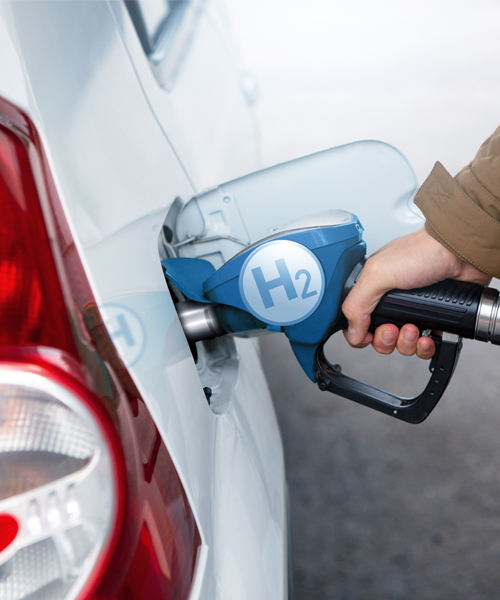Liquefied Natural Gas (LNG)
Liquefied Natural Gas (LNG)
LNG as fuel
LNG as fuel
The mobility sectors face the ambitious challenge of achieving carbon neutrality over the coming decades. Electrification and hydrogen are emerging as promising options for reducing emissions in urban (passenger cars, vans, buses, and motorcycles) and regional (trains, streetcars, and ferries) transport.
In sectors such as maritime transport, solutions such as electrification and hydrogen are not yet a viable option in the short term. This is where Liquefied Natural Gas (LNG) presents itself as an alternative to reduce CO₂ emissions.
What is LNG (Liquefied Natural Gas)?
What is LNG (Liquefied Natural Gas)?
Liquefied Natural Gas is an efficient fuel that contributes to the reduction of CO2 emissions and promotes more environmentally friendly practices in the transportation sector. It is used to power ships, trucks, and trains as an alternative to conventional fuels.
Where does liquefied gas come from? It is obtained directly from natural gas, after a cooling process at extremely low temperatures (around -160°C) to convert it into a liquid state. This process reduces its volume 600 times, making it easier to transport and store.

Advantages of LNG
Advantages of LNG
Liquefied Natural Gas not only offers operational advantages, but also marks a milestone in the search for more environmentally friendly practices in mobility.
Environmental benefits:
- Reduction of CO2 emissions by 20%.
- Virtually eliminates sulfur dioxide (SO2), nitrogen dioxide (NO2), and particulate matter.
Logistical benefits:
- Space optimization. The volume of natural gas is reduced during the liquefaction process (the gas changes from a gaseous to a liquid state).
- Can be used as a fuel in a wide variety of applications, such as shipping, land transportation, and power generation.
Differences between LNG and CNG
The main difference between Liquefied Natural Gas and Compressed Natural Gas is its storage state and applications.
Liquefied Natural Gas: fuel for long distances
- LNG liquefies at extremely low temperatures, which reduces its volume by up to 600 times.
- Facilitates storage and transportation over long distances, both by land and by sea.
- Used as fuel in a wide variety of applications: fuel for ships, heavy trucks, and as a source of energy in remote areas.
- Promotes low-carbon solutions in long-distance transportation.
Compressed Natural Gas: fuel for shorter distances
- It is compressed at high pressures, without changing its gaseous state.
- Simplifies storage and transportation over shorter distances.
- Mainly used in lightweight vehicles, buses, and some service trucks.
- It is perfect for urban and regional transport, with an ever expanding refueling infrastructure.
LNG as fuel
Liquefied Natural Gas is used as fuel in:
- Electricity generation: LNG is used in power plants to produce electricity more efficiently. Its use in power generation almost completely eliminates emissions of carbon dioxide (CO2), nitrogen oxide (NOx), sulfur oxide (SOx), and particulate matter.
- Transportation: Reducing the carbon footprint of transportation, both maritime and land, requires a multifaceted approach. Mixed solutions, such as the introduction of hybrid engines or the use of renewable fuels, are realistic measures to advance this goal. LNG, however, is positioned as a viable alternative for heavy-duty vehicles such as trucks, buses, and trains.
- Heating: Liquefied Natural Gas can be used as a fuel for heating homes and industries, replacing other fuels. It offers greater energy efficiency, which translates into lower consumption and, therefore, economic savings.
New refueling alternatives
Discover the alternatives for heavy transports such as maritime transport.
Leading the way in the supply of LNG as a marine fuel
Leading the way in the supply of LNG as a marine fuel
At Repsol we are at the forefront of the energy transition in maritime transport, promoting Liquefied Natural Gas and renewable fuels as alternatives for carbon neutral mobility.
Our firm commitment to LNG is reflected in:
- Collaboration with key industry players: we have a strategic agreement with Brittany Ferries to supply this fuel to its ships in Spain as of 2022, with part of its LNG-powered fleet operating between the UK and northern Spain.
- Innovation and infrastructure development: we inaugurated a new LNG supply terminal for ships in the port of Santander in 2023, which contributes to the annual reduction of more than 12,000 tonnes of CO2.
- Leadership in refueling at seaports: we set a milestone by carrying out the first LNG refueling with a total offsetting of CO2 emissions in Cartagena, supplying 420 m³ of Liquefied Natural Gas to the Fure Vinga vessel. With the Repsol Trading Bunker Desk, a unit specializing in supplying fuel to ships, we have carried out more than 150 LNG refueling operations to 32 vessels in 8 Spanish ports in recent years.


